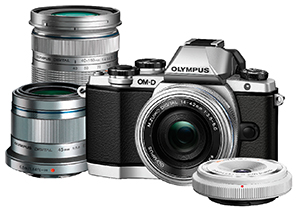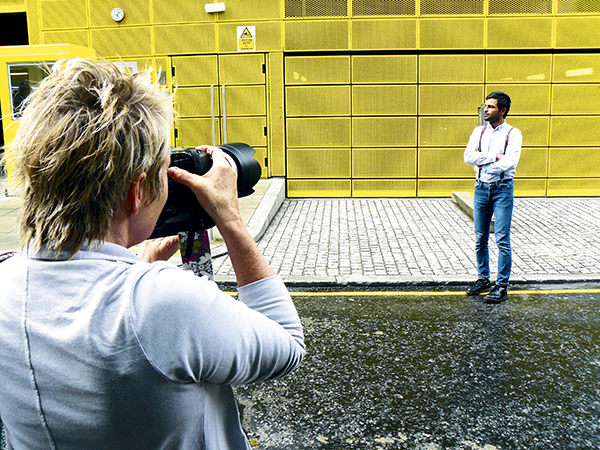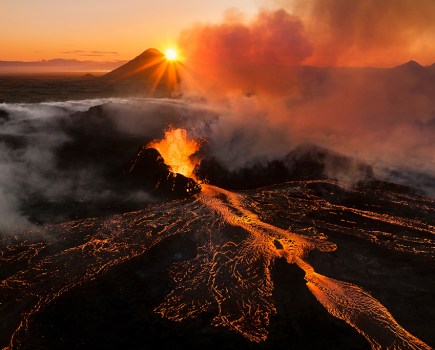APOY 2014 Round 4 – By the Sun and the Moon
Please visit the APOY 2014 home page to find all the rules for entry, terms and conditions, the APOY ENTRY EMAIL ADDRESS, Entry Form (for postal entries), and the disclaimers that must be copied and pasted into an email entry.
Entries must be received by 5pm (UK time) on 27 June 2014
In the first three rounds of APOY 2014 we looked at three popular genres – street photography, wildlife and action photography. Now we turn our attention to a subject that may take some of you out of your comfort zone – portraits.
Portraits are not the easiest of things to master. There are expectations attached to portraits that can be somewhat intimidating. Drawing out the hidden qualities and character of an individual is not always easy. Below you’ll find some tips, tricks and ideas to get you on your way, such as ensuring the correct focus and making sure that your images are not full of superfluous background detail that distract from the presence of your photograph’s subject.
 Photo by Annabel Williams
Photo by Annabel Williams
Great portrait subjects can be found in all walks of life, from family and friends, to your local shopkeeper and even strangers. The only stipulation of this particular round is that all your images must be taken in natural light – sunlight, moonlight and firelight are all fine. However, anything that could be considered artificial light – street lamps, flash and everything in between – are out. With that in mind, make sure you choose your subject wisely.
How to enter
Please visit the APOY 2014 home page for information explaining how to enter. Please use your full name as the file name and paste
the disclaimer into the body of your email if you are sending your entry to us
electronically. We also need to know where and how you took your image, plus
the camera and lens used with aperture and focal-length details. Remember to
include a telephone number and your postal address so we can contact you if you
win.
 First Prize
First Prize
The first-prize winner will receive an Olympus OM-D E-M10 with a 14-42mm EZ Pancake zoom, a 45mm f/1.8 portrait lens, a 40-150mm zoom, a 9mm fisheye lens, a macro adapter and a street case in which to carry it all. That’s a total retail price of £1,200. The E-M10 has a 16.1-million-pixel, four thirds-sized CMOS sensor and a TruePic VII image processing system.
The 1.44-million-dot EVF displays a 100% field of view and has a 120fps refresh rate. The 14-42mm EZ Pancake zoom lens is the most compact pancake lens and has a maximum shooting magnification equivalent of 0.45x in the 35mm format. The 45mm f/1.8 portrait optic is ideal for low-light portrait work without flash. The 40-150mm zoom has high-speed AF and MSC technology, and the 9mm fisheye lens is ideal for capturing wide angle scenes.
 Second Prize
Second Prize
The second-prize winner will receive an Olympus PEN E-PL5 camera plus a 14-42mm and 40-150mm twin-lens zoom kit worth £500.
The E-PL5 offers serious image quality with its powerful 16.1-million-pixel sensor and a new OM-D component in the TruePic VI image processor. The camera has lightning-fast autofocus, a touch-sensitive LCD screen and full HD video.

Third Prize
The third-prize winner will receive an Olympus Stylus SP-100EE Ultra Zoom camera, with an impressive 16-million-pixel sensor and 3in LCD screen. The camera includes a handy autofocus lock so you need never lose a shot due to fuzzy focusing.
The camera also features a 50x optical Ultra Zoom lens with a focal length ranging from 24mm to 1,200mm, and built-in Dot Sight to make it easier to focus precisely on distant subjects.
Oliver Atwell has some suggestions to help you get started shotting stunning action images
Why not try…

Photo by Martin Williams
Different kinds of Light
The point of this round is to get you working with different forms of natural light in order to create beautiful portraits, whoever your subject may be. This means working with sunlight, firelight and even moonlight. One of the most interesting ways of achieving a natural-light portrait is by working with window light.
The tip here is always to remember to expose for the brightest areas of your subject to avoid blowing out the highlights. Also remember to shut off any artificial lights in the room, particularly when you’re working in colour. The reason for this is the colour balance. Attempting to correct varying colour temperatures can be a nightmare for any photographer. Plus, under the rules, you will be disqualified.
 Photo by Jennifer Ann Peel
Photo by Jennifer Ann Peel
On the Streets
While we’ve already had our street photography round, that doesn’t stop you from taking to the streets to find natural-light portraits. Usually, the idea of street photography is to blend in to capture those candid moments that may otherwise pass us by. However, on this occasion it may be worth taking a different approach. Asking to take someone’s portrait may take many of you out of your comfort zone, but just the simple act of asking can lead to excellent results. You may be surprised by how receptive and approachable many people are.
 Photo by Oliver Atwell
Photo by Oliver Atwell
The right lens for the job
Portraits naturally lend themselves to fast telephoto prime lenses, with 85mm a popular choice for full-frame shooters, 50mm on a cropped sensor and 42.5mm on a four thirds camera. The fast maximum apertures offer plenty of control over depth of field, allowing you to blur the background and isolate your subject. The fast maximum apertures of these optics provide plenty of flexibility to shoot in pretty poor lighting conditions rather than resorting to increased ISO sensitivity.
However, don’t think that a good portrait is restricted to just telephoto lenses, as wideangle optics have their place too. While they can distort the face, they can also produce some truly striking portrait shots with a little experimentation.
 Photo by Michael Walsh
Photo by Michael Walsh
Colour and Monochrome
Colour and black & white can bring many things to a portrait, and often which one you choose can depend on the light. Dramatic low-key lighting works well with black & white. The film noir aesthetic is an appealing look and can add real drama to a simple portrait. If you’re working with high-key lighting such as bright sunlight, then you may find that your image benefits from the bright vivid colours that are likely to be present. However, that’s not to say that you can’t switch things up a bit. Take a look at Martin Williams’ image and you’ll see that he has produced a colour image using low-key light.
Please visit the APOY 2014 home page to find all the rules for entry, terms and conditions, the APOY ENTRY EMAIL ADDRESS, Entry Form (for postal entries), and the disclaimers that must be copied and pasted into an email entry.
Entries must be received by 5pm (UK time) on 27 June 2014









